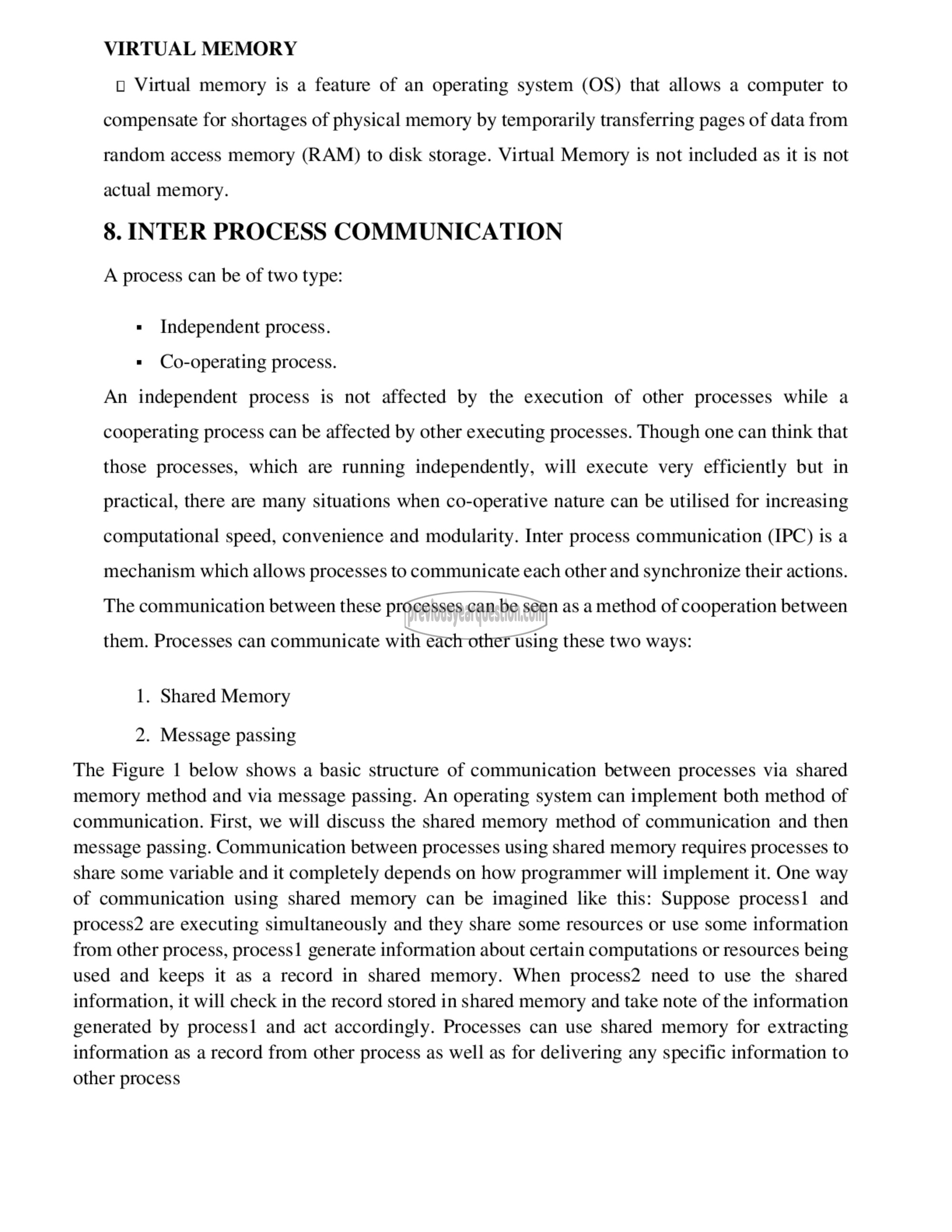APJ ABDUL KALAM TECHNOLOGICAL UNIVERSITY Previous Years Question Paper & Answer
Semester : SEMESTER 6
Subject : Embedded System
Year : 2018
Term : MARCH
Scheme : 2015 Full Time
Course Code : EC 308
Page:37
VIRTUAL MEMORY
ப Virtual memory is a feature of an operating system (OS) that allows a computer to
compensate for shortages of physical memory by temporarily transferring pages of data from
random access memory (RAM) to disk storage. Virtual Memory is not included as it is not
actual memory.
8. INTER PROCESS COMMUNICATION
A process can be of two type:
٠ Independent process.
= Co-operating process.
An independent process is not affected by the execution of other processes while a
cooperating process can be affected by other executing processes. Though one can think that
those processes, which are running independently, will execute very efficiently but in
practical, there are many situations when co-operative nature can be utilised for increasing
computational speed, convenience and modularity. Inter process communication (IPC) is a
mechanism which allows processes to communicate each other and synchronize their actions.
The communication between these processes can be seen as a method of cooperation between
them. Processes can communicate with each other using these two ways:
1. Shared Memory
2. Message passing
The Figure 1 below shows a basic structure of communication between processes via shared
memory method and via message passing. An operating system can implement both method of
communication. First, we will discuss the shared memory method of communication and then
message passing. Communication between processes using shared memory requires processes to
share some variable and it completely depends on how programmer will implement it. One way
of communication using shared memory can be imagined like this: Suppose process! and
process2 are executing simultaneously and they share some resources or use some information
from other process, process! generate information about certain computations or resources being
used and keeps it as a record in shared memory. When process2 need to use the shared
information, it will check in the record stored in shared memory and take note of the information
generated by process! and act accordingly. Processes can use shared memory for extracting
information as a record from other process as well as for delivering any specific information to
other process
